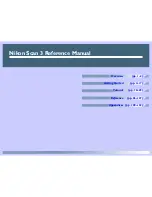
Security
ExtremeWare XOS 11.3 Concepts Guide
314
●
Denial of Service Protection—Denial of Service (DoS) protection is a dynamic response mechanism
used by the switch to prevent critical network or computing resources from being overwhelmed and
rendered inoperative. In essence, DoS protection protects the switch, CPU, and memory from attacks
and attempts to characterize the attack (or problem) and filter out the offending traffic so that other
functions can continue. If the switch determines it is under attack, the switch reviews the packets in
the input buffer and assembles ACLs that automatically stop the offending packets from reaching the
CPU. For increased security, you can turn on DoS protection and establish CLEAR-Flow rules at the
same time.
For more information about DoS attacks and DoS protection, see
“Denial of Service Protection” on
page 320
. For more information about CLEAR-Flow, see
Chapter 18
, “
CLEAR-Flow
.“
●
Network Login—Network login controls the admission of user packets and access rights thereby
preventing unauthorized access to the network. Network login is controlled on a per port basis.
When network login is enabled on a port in a VLAN, that port does not forward any packets until
authentication takes place. Network login is capable of three types of authentication: web-based,
MAC-based, and 802.1x.
For more information about network login, see
Chapter 17
, “
Network Login
.”
●
Policy Files—Policy files are text files that contain a series of rule entries describing match conditions
and actions to take. Policy files are used by both routing protocol applications (routing policies) and
the ACL application (ACLs).
For more information about policy files, see
Chapter 12
, “
Policy Manager
.”
●
Routing Policies—Routing policies are policy files used by routing protocol applications to control
the advertisement, reception, and use of routing information by the switch. By using policies, a set of
routes can be selectively permitted or denied based on their attributes for advertisements in the
routing domain. Routing policies can be used to “hide” entire networks or to trust only specific
sources for routes or ranges of routes.
For more information about using routing policies to control and limit network access, see
Chapter 14
, “
Routing Policies
.”
●
Sentriant—Sentriant is an external security appliance used by the BlackDiamond 10K switch to
detect and defend against threats without interfering with network traffic. Sentriant can actively
engage, determine, and terminate malicious behavior occurring in your network. Sentriant and
CLEAR-Flow provide a rapid response to network threats. Sentriant can add to or modify the
BlackDiamond 10K switch’s CLEAR-Flow rules and ACLs in real-time to inspect additional traffic or
change inspection thresholds.
For more information about Sentriant, contact your Extreme Networks representative. For more
information about CLEAR-Flow, see
Chapter 18
, “
CLEAR-Flow
.”
●
sFlow—sFlow
®
is a technology designed to monitor network traffic by using a statistical sampling of
packets received on each port. sFlow also uses IP headers to gather information about the network.
By gathering statistics about the network, sFlow becomes an early warning system notifying you
when there is a spike in traffic activity. Upon analysis, common response mechanisms include
applying an ACL, changing Quality of Service (QoS) parameters, or modifying VLAN settings.
For more information about sFlow, see the section
“Using sFlow”
in
Chapter 8
, “
Status Monitoring
and Statistics
.”
Safe Defaults Mode
Beginning with ExtremeWare XOS 11.2, when you set up your switch for the first time, you must
connect to the console port to access the switch. After logging in to the switch, you enter safe defaults
Summary of Contents for ExtremeWare XOS 11.3
Page 20: ...Contents ExtremeWare XOS 11 3 Concepts Guide 20...
Page 25: ...1 Using ExtremeWare XOS...
Page 26: ......
Page 38: ...ExtremeWare XOS Overview ExtremeWare XOS 11 3 Concepts Guide 38...
Page 58: ...Accessing the Switch ExtremeWare XOS 11 3 Concepts Guide 58...
Page 146: ...Configuring Slots and Ports on a Switch ExtremeWare XOS 11 3 Concepts Guide 146...
Page 218: ...Status Monitoring and Statistics ExtremeWare XOS 11 3 Concepts Guide 218...
Page 240: ...Virtual LANs ExtremeWare XOS 11 3 Concepts Guide 240...
Page 248: ...Virtual Routers ExtremeWare XOS 11 3 Concepts Guide 248...
Page 278: ...Access Lists ACLs ExtremeWare XOS 11 3 Concepts Guide 278...
Page 288: ...Routing Policies ExtremeWare XOS 11 3 Concepts Guide 288 entry deny_rest if then deny...
Page 344: ...Security ExtremeWare XOS 11 3 Concepts Guide 344...
Page 393: ...2 Using Switching and Routing Protocols...
Page 394: ......
Page 454: ...Spanning Tree Protocol ExtremeWare XOS 11 3 Concepts Guide 454...
Page 484: ...Extreme Standby Router Protocol ExtremeWare XOS 11 3 Concepts Guide 484...
Page 514: ...IPv4 Unicast Routing ExtremeWare XOS 11 3 Concepts Guide 514...
Page 530: ...IPv6 Unicast Routing ExtremeWare XOS 11 3 Concepts Guide 530...
Page 538: ...RIP ExtremeWare XOS 11 3 Concepts Guide 538...
Page 556: ...OSPF ExtremeWare XOS 11 3 Concepts Guide 556...
Page 566: ...OSPFv3 ExtremeWare XOS 11 3 Concepts Guide 566...
Page 589: ...3 Appendixes...
Page 590: ......
Page 640: ...CNA Agent ExtremeWare XOS 11 3 Concepts Guide 640...
Page 670: ...Glossary ExtremeWare XOS 11 3 Concepts Guide 670...
Page 698: ...Index ExtremeWare XOS 11 3 Concepts Guide 698...
















































